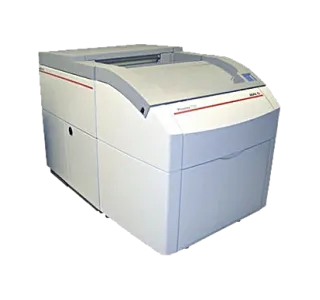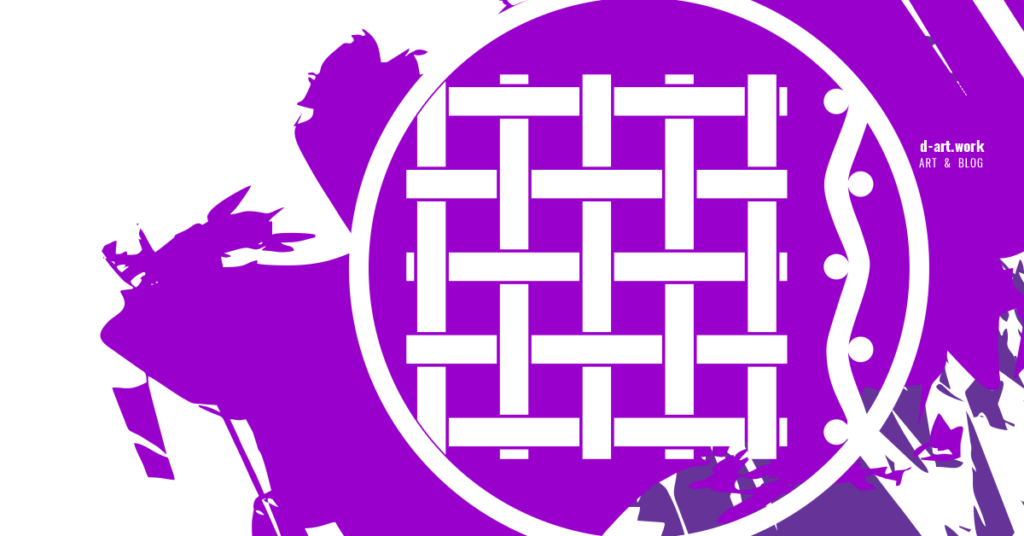This article is about the phase that precedes the matrix engraving or so-called stencil, by the process of screen sensitizing (read Silkscreen – About The Stencil post to know more). All the stages that take place between the creation and final art of the design to be printed and the actual act of printing is called pre-press.
Photolyte
In the context of screen printing, the photolythe or photolith refers to a specific film that carries the image in black and opaque form for engraving on the screen. This black and opaque image corresponds to the print matrix, which after being engraved on the screen corresponds to the so-called stencil (a concept developed in the Silkscreen History post).
There is no consensus on the exact meaning of photolith, in general. The word comes from the junction of the Greek phōs or photós (light) and lythós (stone or also something soluble). Some argue that it is an abbreviation of photolithography (the process of transporting images onto lithographic stone directly or photomechanically), but there are also those who distinguish photolythe from photolith, with the former corresponding to the version on a special sensitized sheet or film, and the latter referring to the version on an engraved plate or stone. There may be yet another interpretation of photolith taking on another meaning of líthus or lythós as something soluble, removable.
The traditional photolith, often a composite of several very thin insulating layers, including a layer in a specific type of glass similar to silica and a layer sensitized with silver chloride, on which the monochrome copy of an original image is recorded and photomechanically developed, gave way to the photolith generated on an imagesetter, a sophisticated piece of equipment connected directly to the computer, which prints, by a process similar to laser printing (but at a much higher resolution), a monochrome version of the desired image on a sensitized film.
Later, with the advent of laser and inkjet printers, and later the digital revolution, the process became as simple as home printing, without the need for sensitization of the support, using materials as accessible as tracing paper, engineering paper, matte polyester or acetate suitable for these types of printing. Obviously this last photolith process is far from the quality provided by imagesetters (especially in halftone reproductions), but it is reasonably adapted to most direct color screen printing jobs, even in professional environments, with the help of one or another additional procedure, with the exception of photographic reproductions, the so-called four-color process.


Slide
As for the slide, although its definition varies substantially depending on the area of activity (whether photographic, audiovisual, or graphic arts related), in this specific context, I will use the term as a reference to silkscreen context, which does not involve any light intervention in the development of the image, the acetate being directly drawn or cast by hand before finalizing the stencil, as briefly explained at the beginning of this article.
Essential characteristics of the photolyte or slide
Both the photolith and the slide should be as transparent as possible in the areas outside the printed image, completely opaque in the mass-printed areas, and as evenly defined in the halftone areas, preferably using resolutions below 600 DPI (dots per inch) and above 20% gray scale. Too thin strokes below 0.5 millimeters in thickness should also be avoided. Greaseproof paper, engineering paper or matte polyester are not completely transparent, but it is possible to engrave dies using these materials, especially polyester which has the advantage of holding toner better in laser printers, and blackening spray can be used to achieve greater opacity.
If you use laser or inkjet acetate, one of the most used tricks is to double print, i.e. print the image on two acetates and put them together in one, in the case of opaque images. In the case of hand drawing, acetate and china ink (India ink pen) should be used to ensure opacity. Also, any materials used should be kept free of dust and fingerprints.
Find references and more knowledge in Learning Links

